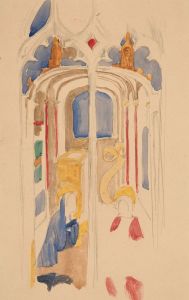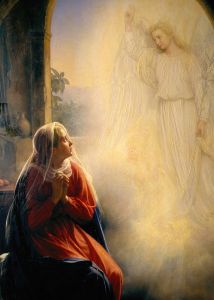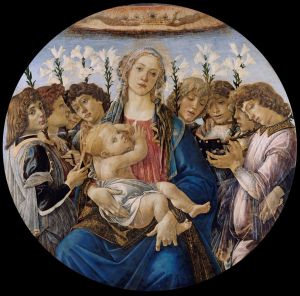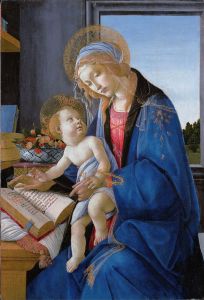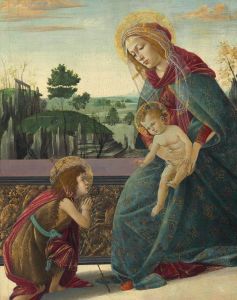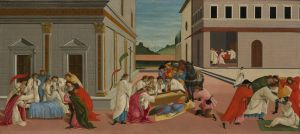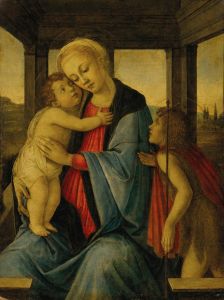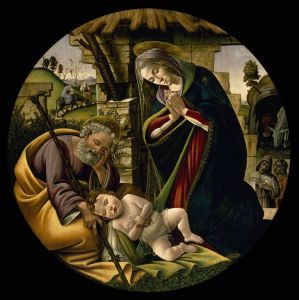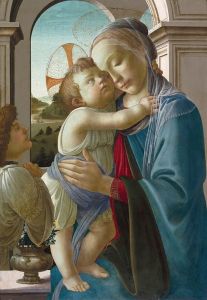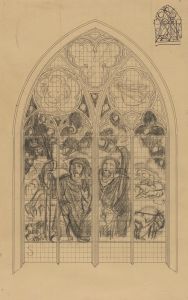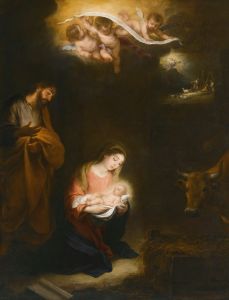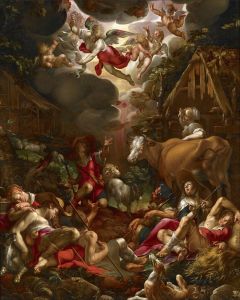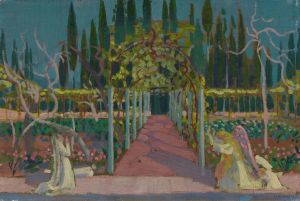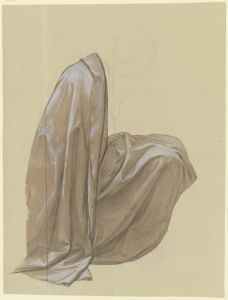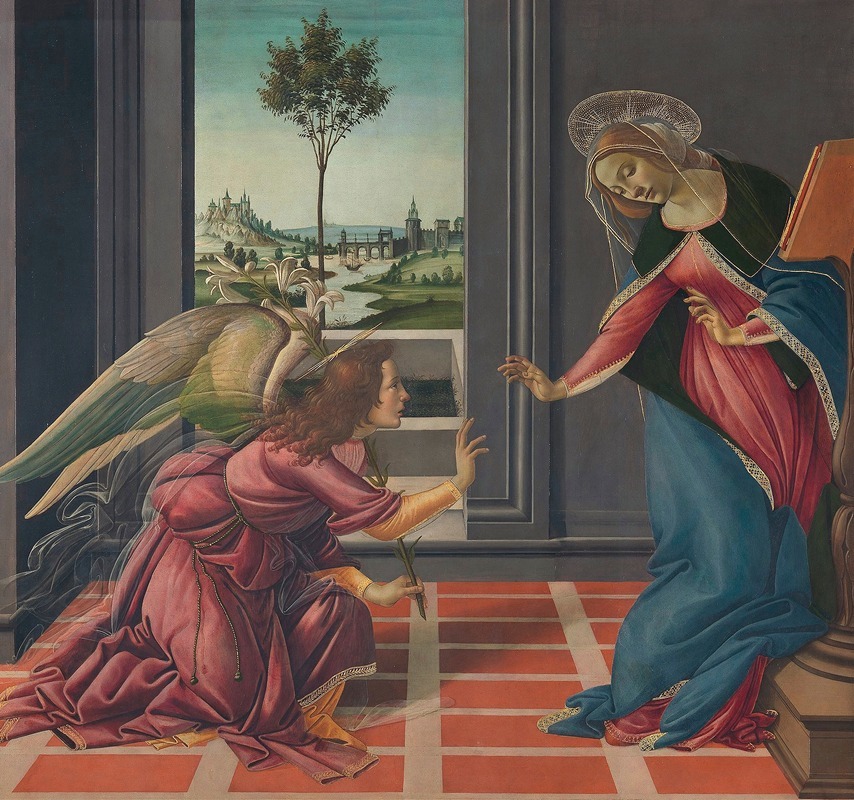
Annunciation
A hand-painted replica of Sandro Botticelli’s masterpiece Annunciation, meticulously crafted by professional artists to capture the true essence of the original. Each piece is created with museum-quality canvas and rare mineral pigments, carefully painted by experienced artists with delicate brushstrokes and rich, layered colors to perfectly recreate the texture of the original artwork. Unlike machine-printed reproductions, this hand-painted version brings the painting to life, infused with the artist’s emotions and skill in every stroke. Whether for personal collection or home decoration, it instantly elevates the artistic atmosphere of any space.
Annunciation by Sandro Botticelli
The Annunciation is a painting by the Italian Renaissance artist Sandro Botticelli. Created around 1489–1490, this work is a depiction of the biblical scene of the Annunciation, in which the Archangel Gabriel announces to the Virgin Mary that she will conceive and become the mother of Jesus Christ. The painting is executed in tempera on panel and measures approximately 49 cm by 58 cm (19.3 in by 22.8 in). It is currently housed in the Kelvingrove Art Gallery and Museum in Glasgow, Scotland.
The composition of the painting reflects Botticelli's mastery of perspective and his ability to convey emotion through gesture and expression. The scene is set in an architectural interior, with the Virgin Mary seated on the right side of the panel and the Archangel Gabriel kneeling on the left. Gabriel's posture suggests reverence and humility, while Mary's slightly recoiling gesture conveys surprise and contemplation. The figures are framed by a simple yet elegant setting, with a tiled floor and a window that opens to a serene landscape in the background.
Botticelli's use of color and light enhances the spiritual atmosphere of the painting. The soft, harmonious palette includes shades of gold, blue, and red, which are symbolic in Christian art. Gold often represents divinity, blue is associated with the Virgin Mary, and red signifies Christ's future sacrifice. The delicate rendering of the figures and the intricate details of their garments showcase Botticelli's skill as a painter and his attention to detail.
The Annunciation reflects the influence of the Early Renaissance emphasis on naturalism and classical ideals, as well as Botticelli's own stylistic tendencies. The painting is notable for its graceful lines and the ethereal quality of the figures, which are hallmarks of Botticelli's work. It also demonstrates his ability to convey a sense of divine presence and human emotion within a single composition.
This painting is one of several representations of the Annunciation by Botticelli, who frequently explored religious themes in his art. While less well-known than some of his larger and more elaborate works, such as The Birth of Venus and Primavera, this smaller panel is a testament to Botticelli's ability to create intimate and spiritually resonant images.





